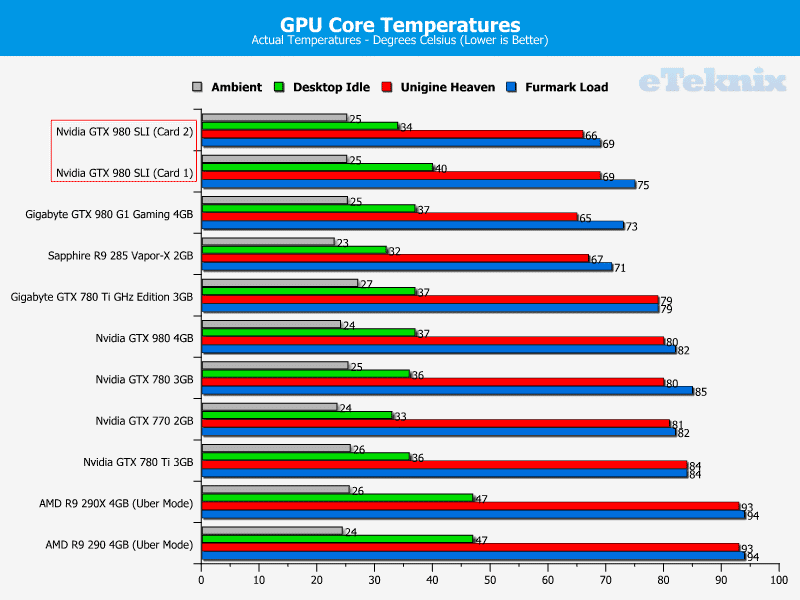Testing Nvidia’s GeForce GTX 980 4GB Graphics Cards In SLI
Ryan Martin / 10 years ago
Temperatures
The cooling solution which graphics card vendors choose to implement is one of the main differences that consumers have to contend with when choosing a graphics cards. Apart from their acoustic properties, the thermal properties of graphics card coolers are extremely important. Lower temperatures are always better and with AMD and Nvidia opting to use dynamic overclocking algorithms that take temperature into account it is important that graphics card vendors use high performance cooling solutions in order to maximise performance. The era of graphics cards reaching dangerous temperatures are now in the past but the importance of lower temperatures still remains. Lower temperatures mean better stability, longer component longevity and lower fan speeds .We take temperature readings after 5 minutes of three different load scenarios: desktop idle, Furmark load and Unigine Heaven load. We always record actual temperatures and make a note of the ambient. In the case where more than 1 GPU is used an average is created.

Our custom fan profile ensured the temperature stayed well below 80 degrees under all load scenarios. The temperatures you achieve in an SLI configuration will obviously vary depending on clock speeds, the card’s chosen, the spacing used, what kind of case you have and so on.



















